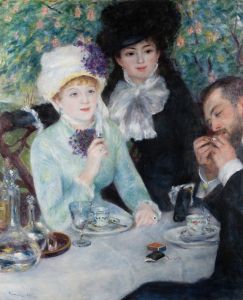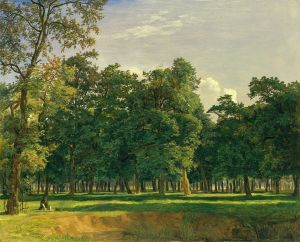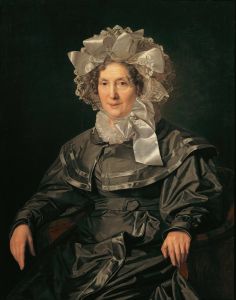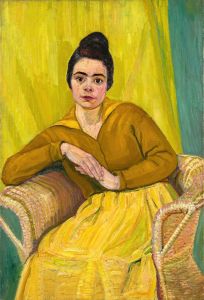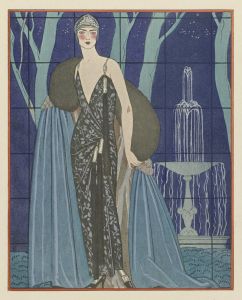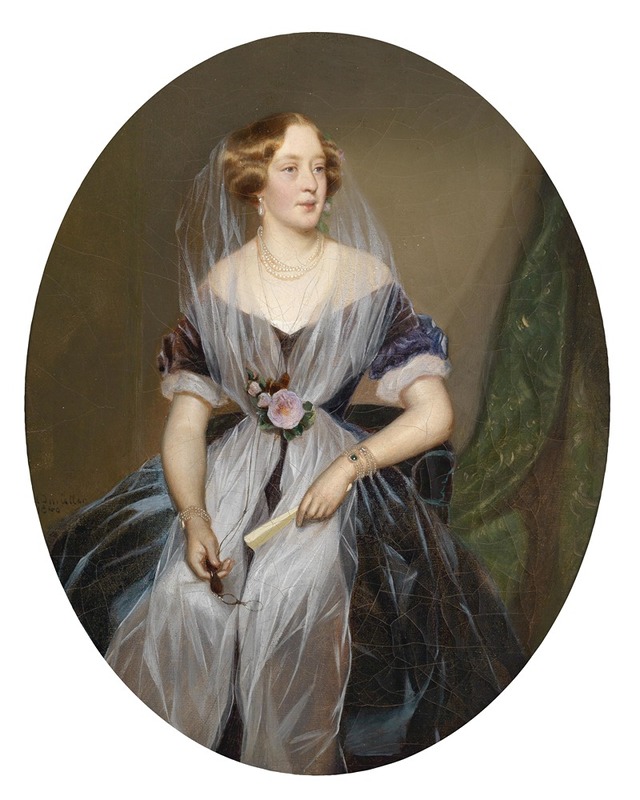
Portrait einer adeligen Dame
A hand-painted replica of Ferdinand Georg Waldmüller’s masterpiece Portrait einer adeligen Dame, meticulously crafted by professional artists to capture the true essence of the original. Each piece is created with museum-quality canvas and rare mineral pigments, carefully painted by experienced artists with delicate brushstrokes and rich, layered colors to perfectly recreate the texture of the original artwork. Unlike machine-printed reproductions, this hand-painted version brings the painting to life, infused with the artist’s emotions and skill in every stroke. Whether for personal collection or home decoration, it instantly elevates the artistic atmosphere of any space.
"Portrait einer adeligen Dame" (Portrait of a Noble Lady) is a painting by the Austrian artist Ferdinand Georg Waldmüller. Waldmüller, born on January 15, 1793, in Vienna, was a prominent figure in the Biedermeier period, known for his detailed and realistic portrayal of subjects. He was a master of genre painting and portraiture, capturing the essence of 19th-century Austrian society.
The painting "Portrait einer adeligen Dame" exemplifies Waldmüller's skill in portraiture, showcasing his ability to depict the intricate details of his subject's attire and facial features. The noble lady in the portrait is dressed in the fashion typical of the early to mid-19th century, reflecting her high social status. Her attire, likely made of luxurious fabrics, and the meticulous rendering of her jewelry and accessories, highlight Waldmüller's attention to detail and his commitment to realism.
Waldmüller's use of light and shadow in this portrait is particularly noteworthy. He employs a naturalistic approach, with soft lighting that enhances the three-dimensionality of the subject's face and clothing. This technique not only adds depth to the painting but also brings a lifelike quality to the noble lady, making her appear almost tangible to the viewer.
The background of the painting is relatively simple, ensuring that the focus remains on the subject. This compositional choice is typical of Waldmüller's portraits, where the sitter's personality and status are emphasized without distraction. The neutral background also serves to highlight the colors and textures of the lady's attire, further showcasing Waldmüller's technical prowess.
Ferdinand Georg Waldmüller was a significant figure in the Austrian art scene, and his works are celebrated for their contribution to the Biedermeier style. His portraits, including "Portrait einer adeligen Dame," are valued for their historical and artistic significance, providing insight into the fashion, culture, and social hierarchies of 19th-century Austria.
Waldmüller's career was marked by his dedication to capturing the world around him with precision and empathy. He was not only a painter but also an influential art teacher and writer, advocating for the importance of studying nature and everyday life in art. His legacy is preserved in numerous museums and collections, where his works continue to be admired for their technical excellence and historical value.
In summary, "Portrait einer adeligen Dame" by Ferdinand Georg Waldmüller is a fine example of 19th-century Austrian portraiture. The painting reflects Waldmüller's mastery of detail, light, and composition, offering a glimpse into the life and status of a noble lady of the time. Waldmüller's contributions to the art world remain significant, and his works continue to be appreciated for their beauty and historical importance.








